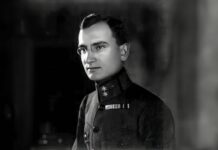Novi film bratov Nolan Medzvezdje (Interstellar, 2014) je odličen! Sploh, če ste kdaj prebrali kako knjigo o črnih luknjah in teoriji relativnosti.
Takole se sodelovanja pri snemanju spominja znanstveni svetovalec scenarista in režiserja Kip Thorn, strokovnjak za črne in črvje luknje, v intervjuju za revijo Nature (pri Kvarkadabri smo o njegovih teorijah pisali že davnega leta 1999 v sestavku: O črvjih luknjah in časovnih strojih):
“Matthew McConaughey and Anne Hathaway came to me for in-depth discussions — they were trying to wrap their heads around the science. Michael Caine asked to have his photograph taken with me, and my jaw dropped. He told me his character was based on me and he wanted to talk about how a theoretical physicist thinks. Jessica Chastain asked for help with quantum equations.” (Q&A: Space-time visionary : Nature)
Daljši tekst o znanosti v filmu so pred nekaj dnevi objavili tudi pri reviji Wired How Building a Black Hole for Interstellar Led to an Amazing Scientific Discovery:
Nolan’s story relied on time dilation: time passing at different rates for different characters. To make this scientifically plausible, Thorne told him, he’d need a massive black hole—in the movie it’s called Gargantua—spinning at nearly the speed of light. As a filmmaker, Nolan had no idea how to make something like that look realistic. But he had an idea how to make it happen. …
So he asked Thorne to generate equations that would guide their effects software the way physics governs the real world. They started with wormholes. … “But ray-tracing software makes the generally reasonable assumption that light is traveling along straight paths,” says Eugénie von Tunzelmann, a CG supervisor at Double Negative. This was a whole other kind of physics. “We had to write a completely new renderer,” she says. …
Still, no one knew exactly what a black hole would look like until they actually built one. Light, temporarily trapped around the black hole, produced an unexpectedly complex fingerprint pattern near the black hole’s shadow. And the glowing accretion disk appeared above the black hole, below the black hole, and in front of it. “I never expected that,” Thorne says. “Eugénie just did the simulations and said, ‘Hey, this is what I got.’ It was just amazing.”
In the end, Nolan got elegant images that advance the story. Thorne got a movie that teaches a mass audience some real, accurate science. But he also got something he didn’t expect: a scientific discovery. “This is our observational data,” he says of the movie’s visualizations. “That’s the way nature behaves. Period.” Thorne says he can get at least two published articles out of it.
Pravkar pa je izšla tudi knjiga The Science of Interstellar, v kateri Kip Thorne podrobno pojasni znanstveno ozadje filma.








Gledal. Ne tratit časa in denarja, samo še en holywoodski film več. Nič novega, veliko starega in kup glupih dialogov.
A lahko tukaj kaj vprašamo o fizikalnem ozadju filma? Meni recimo ni jasno, zakaj taka razlika v času pri obisku prvega planeta: tisti vesoljci, ki gredo na planet, tam preživijo nekaj ur (na oko, recimo 12 zemeljskih ur (moja ocena glede na delo, ki ga opravijo)), oni, ki kroži v postaji okoli planeta, pa ob ponovnem snidenju pravi, da jih je čakal 23 let!?